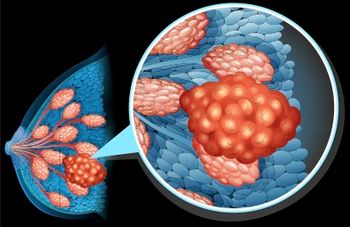
Breast Cancer Screening Can Begin Later in Childhood Cancer Survivors
Research evaluated whether initiating breast cancer screening at age 30 may be preferable to current guidelines among survivors of childhood cancer with a history of chest irradiation.
In female survivors of childhood cancers with a history of chest irradiation, initiation of breast cancer screening at age 30 years may be preferable to the current practice of initiating screening at age 25 years due to cost and quality-of-life factors, according to a new modeling analysis. The results (
Survivors of childhood cancer who had chest irradiation have a heightened risk of breast cancer, similar to that seen in individuals who harbor the BRCA1 mutation. The Children’s Oncology Group guidelines recommend screening in women beginning at age 25 years, but there is little existing evidence regarding the cost, benefits, and potential harms.
“These kinds of modeling exercises are almost necessary. I was involved in a study a few years ago, using tamoxifen for prevention of breast cancer, and we couldn’t accrue the study. Nobody will do a randomized trial in this population to (take a risk and) omit MRI, so you have to model it to make recommendations,” Patricia Ganz, MD, associate director of population science at UCLA’s Johnson Comprehensive Cancer Center, told Cancer Network.
The researchers used data from the Childhood Cancer Survivor Study to run two National Cancer Institute–funded Cancer Intervention and Surveillance Modelling Network (CISNET) simulations. They compared outcomes from screening regimens that began at age 25, 30, and 35 years, using either mammography plus MRI or MRI alone, as well as biennial mammography starting at age 50 years. The researchers tested performance based on published studies on BRCA1/2 carriers.
In the absence of screening, all models showed a lifetime breast cancer mortality risk of 10% to 11% among 25-year-olds. Screening at age 25 years using mammography or MRI reduced mortality to 3.2% to 4.4% (56% to 71% reduction in risk). Risk reduction was at least 50% in all starting age groups using either screening method. All models and strategies showed that the harm-to-benefit ratio, including measures such as false-positives per averted death, were lower than what is seen in average-risk women.
Screening initiation at age 25 years averted the most deaths and was cost-effective, with an incremental cost-effectiveness ratio (ICER) of less than $50,000 per quality adjusted life year (QALY) compared with initiating mammography at age 50 years. Initiation at age 30 years was found to be more favorable, with an ICER of less than $100,000 compared with an ICER of greater than $100,000 for initiation at age 25 years. Various models produced different favored screening modalities, leading the authors to conclude that mammography may offer little benefit over MRI alone.
“The averted deaths was greatest starting at 25, but I think that’s not ideal because of the false positives and some of the other morbidity,” said Ganz.
Ganz also noted the difficulties of getting women to begin screening at age 25. “It was probably recommended to them (to start screening at 25), but most of them are starting careers, starting families. If we don’t say it has to be by age 25, that by age 30 it will give you the same value,” that could help empower female childhood cancer survivors, she said.
Newsletter
Stay up to date on recent advances in the multidisciplinary approach to cancer.


















































































